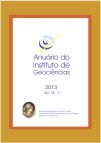Seasonal Analisys of Rio Grande do Sul Regions Affected by Severe Events Generated by MCS from 2004 to 2008
DOI:
https://doi.org/10.11137/2013_2_61_69Abstract
Disaster episodes caused by severe meteorological phenomena, also known as Severe Events (SE), such as windstorms, hail and flood have been studied extensively due to the hazard posed to society. One of the meteorological systems that is fairly common in Rio Grande do Sul state (RS), Brazil, and that is often associated with the SE are Mesoscale Convective Systems (MCS). Since the economy of RS is mostly based on agriculture, which is an activity very susceptible to changes in weather, economic losses caused by SE in RS are rather frequent. Given this point, the objective of this work was to analyze the seasonal distribution of regions affected by SE generated by MCSs that reached RS (SE MCSRS) in the period from 2004 to 2008. For this study, different data sources were used: SE reports and municipalities affected by SE (MA SE) obtained from RS Civil Defense data base; trajectories of the MCS that reached RS (MCS RS) based on Forecasting and Tracking of Active Cloud Clusters (ForTrACC) analysis tool; and raw infra-red (channel 4) satellite imagery from GOES 10 and 12 satellites. The results showed that: i) about 45% of the reported SE in RS were associated to MCS RS; ii) 58% of the MASE were affected by MCS RS; iii) the north portion of RS was the most affected by SE MCSRS; iv) windstorm and hail were the types of SEMCSRS that affected the largest number of municipalities and v) JAS (Jul-Aug-Sep) was the quarter that presented the largest number of municipalities affected by SE SCMRS (MA SE-MCSRS).Downloads
Download data is not yet available.
Downloads
Published
2013-01-01
How to Cite
Rasera, G. and Campos, C. R. J. de (2013) “Seasonal Analisys of Rio Grande do Sul Regions Affected by Severe Events Generated by MCS from 2004 to 2008”, Anuário do Instituto de Geociências. Rio de Janeiro, BR, 36(2), pp. 61–69. doi: 10.11137/2013_2_61_69.
Issue
Section
não definida
License
This journal is licensed under a Creative Commons — Attribution 4.0 International — CC BY 4.0, which permits use, distribution and reproduction in any medium, provided the original work is properly cited.















